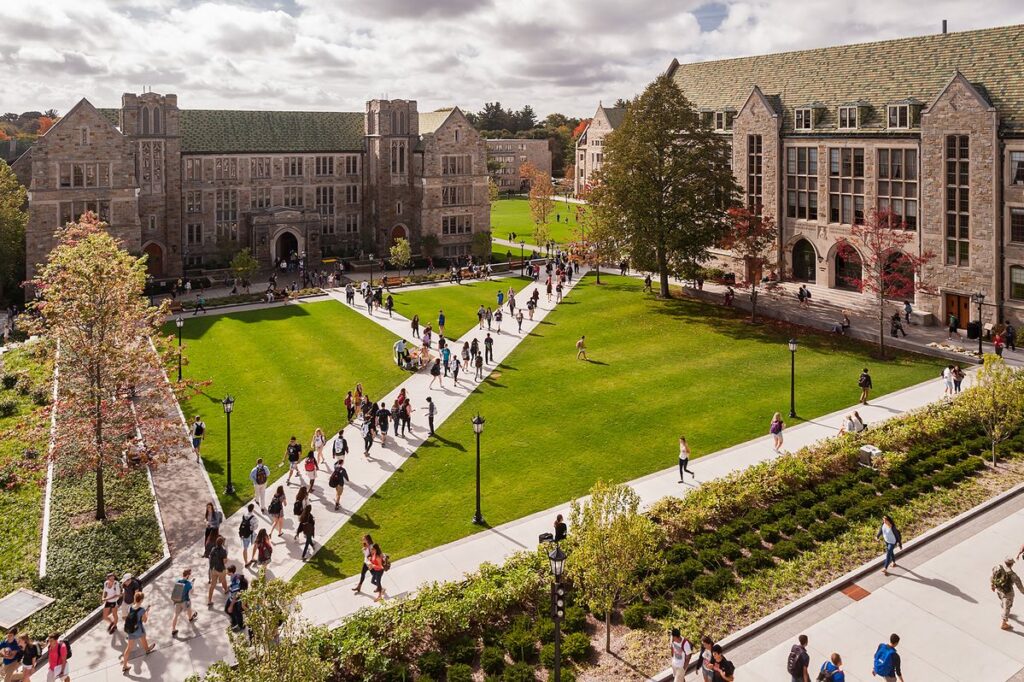According to the study, the drop in enrollment would result in the loss of almost 60,000 jobs nationwide and $7 billion for local US economies.

Washington, D.C. — US Faces 40% Drop in Foreign Students international admissions across American universities and colleges. This downturn comes at a time when higher education institutions are still recovering from the economic impacts of the COVID-19 pandemic and rising global competition for student talent.
This sharp drop could not only impact university revenues but also have long-term consequences for America’s global academic standing and workforce development. But what’s driving this alarming trend?
A Perfect Storm: Key Factors Behind the Decline
1. Visa Delays and Policy Uncertainty
One of the primary reasons behind the expected decline is ongoing delays in student visa processing. Many students from countries such as India, China, and Nigeria — traditionally strong sources of international students — have reported excessive wait times at US consulates and embassies. According to recent data from According to the U.S. State Department, many students are forced to postpone their studies or miss application deadlines because visa interview wait periods in some countries can reach 200 days.
In addition to logistical delays, inconsistent immigration policies have created confusion and anxiety among students and their families. Shifts in Optional Practical Training (OPT) rules, work visa eligibility, and post-study pathways have discouraged students from choosing the U.S. as a stable and secure destination.
US Faces 40% Drop in Foreign Students/US Faces 40% Drop in Foreign Students
2. Rising Tuition and Living Costs
The cost of education in the U.S. continues to rise. International students pay significantly higher tuition than domestic students, and when combined with soaring living expenses in cities like New York, Boston, and San Francisco, the financial burden becomes overwhelming.
A recent survey by EducationUSA found that nearly 45% of students cited financial constraints as the main reason for not applying to or continuing education in the U.S.
US Faces 40% Drop in Foreign Students
3. Geopolitical Tensions and Safety Concerns
Geopolitical factors are also playing a role. Strained relations between the U.S. and countries like China and Russia have led to tighter scrutiny of student applications. Chinese students — who make up the largest international student population in the U.S. — have faced increased rejection rates and pressure at home to choose alternative destinations such as the UK, Canada, or Australia.
Furthermore, gun violence and campus safety concerns have become major deterrents. Several high-profile shootings and racially motivated attacks have made international students and their families apprehensive about personal safety in the U.S.
US Faces 40% Drop in Foreign Students
4. Post-Pandemic Shift in Student Preferences
The COVID-19 pandemic has altered how students view education. Many are now more open to online or hybrid models, which often do not require relocation to the U.S. Countries that offer more flexible visa and work policies — such as Canada and Germany — have seen rising enrollments at the expense of U.S. institutions.
Moreover, students are increasingly prioritizing countries that provide clear paths to permanent residency and employment. The U.S., with its complex and uncertain immigration system, is gradually losing its appeal in this aspect.
Impact on U.S. Higher Education System
The projected enrollment decline could have serious consequences for American universities, especially smaller institutions that heavily rely on international tuition fees to balance their budgets. According to the Institute of International Education (IIE), international students contributed over $38 billion to the U.S. economy in 2023. A 30-40% drop could result in billions in lost revenue.
In states like California, Texas, and Massachusetts — which host the largest international student populations — colleges have already started slashing budgets, reducing staff, and cutting non-essential programs to cope with expected losses.
US Faces 40% Drop in Foreign Students/US Faces 40% Drop in Foreign Students/US Faces 40% Drop in Foreign Students
What Can Be Done?
Experts suggest several policy reforms to reverse the trend:
Streamline visa processing and reduce wait times.
Promote transparent immigration policies, especially around work visas and post-study employment.
Offer financial incentives or scholarships to deserving international students.
Improve campus safety protocols and mental health support services.
Invest in global outreach and student support programs.
Some universities have begun taking steps in this direction. The University of Illinois, for instance, has launched a dedicated “Global Student Task Force” to enhance outreach, improve onboarding, and offer tailored financial aid to international applicants.
Competitors on the Rise
The global education landscape has become fiercely competitive. Canada, Australia, the UK, Germany, and even the UAE are positioning themselves as student-friendly destinations. These countries offer faster visa approvals, lower tuition, and attractive immigration pathways — drawing students who may have previously looked to the U.S.
In 2024, Canada saw a 12% rise in international applications, while Australia and the UK recorded 8% and 10% increases respectively.
Final Word
The US Faces 40% Drop in Foreign Students this fall serves as a wake-up call. For decades, the U.S. has been a beacon for global talent, innovation, and academic excellence. However, without meaningful reform and investment in international education, that reputation may gradually erode.
In a world where skilled minds have more choices than ever before, the U.S. must act swiftly and smartly — or risk losing the global education race.
External Link: US May See 30-40%Drop In Foreign Student Enrollments This Fall-Read More Details.
If you’re interested in staying updated with global developments beyond education, check out our coverage of World News at SBKI News.
